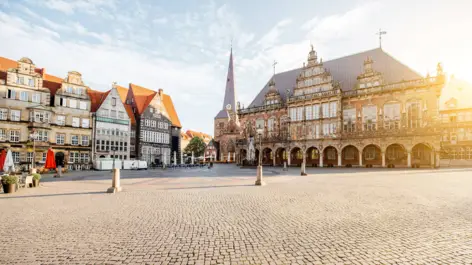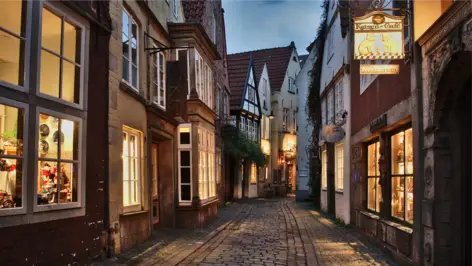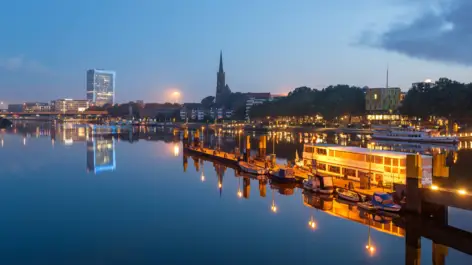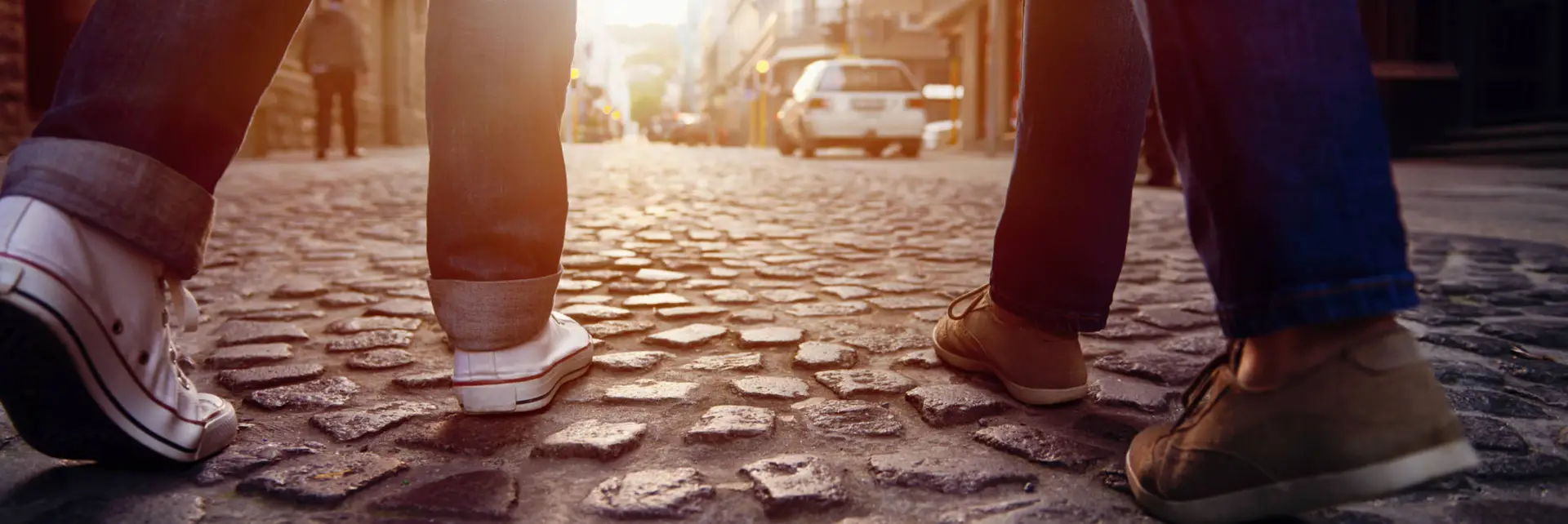In Bremen’s “living room”
Bremen’s Marktplatz and the surrounding streets are lovingly known by locals as “die gute Stube”, or the city’s “living room”, and it is exactly here that the H+ Hotel Bremen is located. The banks of the Weser lie just one hundred metres away. The main train station is just a fifteen-minute walk away, or five minutes by train. The Kunsthalle, the theatre on Goetheplatz and the Schauspielhaus are all within five to ten minutes’ walk of the hotel. The nearest public transport stop is “Domsheide”, approximately 150 metres from the hotel, where six S-Bahn lines and 2 bus routes offer convenient transportation throughout the city.

Why not start your tour of the city at Marktplatz, just one hundred metres from the H+ Hotel Bremen. The City Hall (Rathaus), an example of the Weser Renaissance, and the “Roland” statue directly in front of it are both UNESCO World Heritage sites. St. Peter’s Cathedral (St.-Petri-Dom) is an impressive Romanesque-Gothic sandstone building with two crypts, a cathedral museum, and the “Bleikeller”, as the eastern crypt is known.
On the west side of the City Hall is the “Bremen Town Musicians” statue - the legend goes that if you grab the donkey by the leg, you are granted a wish. After this, head to the eastern corner of the square and look for the “Bremen hole”: throw in a coin to hear the voices of the town musicians.
The passage on the left next to the Schütting, (the merchants’ guild house dating back to 1538) leads directly from Markplatz to Böttcherstraße. Almost all the buildings on this approximately 100-metre street were designed and built by Bernhard Hoetger (1874-1949) between 1922 and 1931, and are a rare example of Expressionist architecture. In 1937, the street was placed under a conservation order by the Nazis as a negative example of the “degenerate art of the Weimar period”.
Today it is regarded an architectural work of art which houses, among others, the Paula Modersohn Becker Museum, craft studios, shops and restaurants.

Böttcherstraße

Skyline of Bremen
The H+ Hotel Bremen is only a hundred metres or so from the banks of the Weser. Take a stroll and let the city’s maritime side work its magic on you, or head to Martinianleger for a harbour cruise or a boat trip downriver to North Bremen. The “Schlachte” is filled with restaurants, and every Saturday there is a large flea market on the promenade below the Kajenmarkt, where northern German specialities and live music are the order of the day.
Opposite the “Schlachte” and its boats, and reached via a footbridge is the “Teerhof”, which houses the Weserburg Museum of Modern Art.
Take the pedestrian tunnel from the banks of the Weser to reach the “Schnoor”, which is also just five minutes’ walk from the H+ Hotel Bremen. This medieval pedestrian district is probably the oldest settlement in the city, and gets its name from its “main street”, where the houses are lined up as if they’re on a string, or “Schnur”. The area is a picturesque mix of narrow alleys, miniature houses, tiny gardens, romantic squares, quaint shops, various restaurants, art galleries and craft studios.
Bremen’s “House of History" (“Bremer Geschichtenhaus”) is a living history museum where costumed actors perform scenes offering an insight into the history of the Hanseatic city, while the Packhaustheater promises cultural enjoyment.
A trip to the “Universum” science museum offers an experience of a different kind. It’s just a quarter of an hour by bike from the H+ Hotel Bremen, via the green city ramparts and the Bürgerpark. In the museum’s interactive exhibition, visitors can try out most of the more than 300 exhibits on the laws of physics, natural phenomena and their own perception for themselves, and learn astonishing facts about people, technology and nature. Outside, a “playground” invites old and young alike to make further discoveries while in tunnels or using water, light and air.

Medieval pedestrian district "Schnoor"
